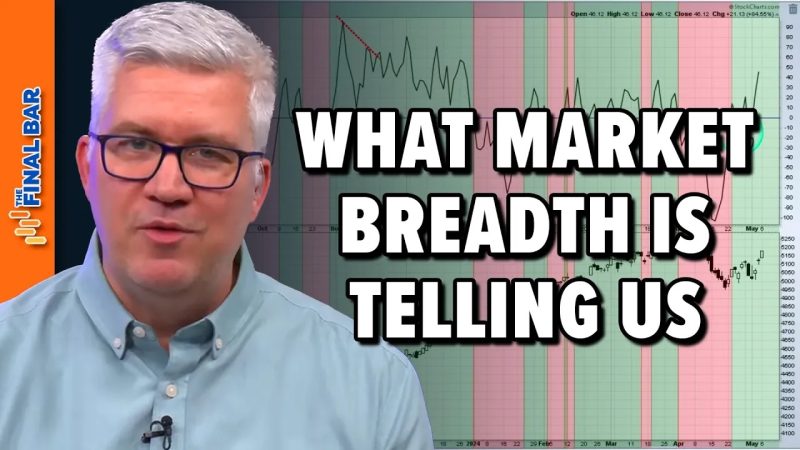In the world of finance and investing, there are numerous indicators and metrics that traders and analysts use to assess the health of the market and make informed decisions. One such indicator that should be on every investor’s radar is market breadth.
Market breadth refers to the overall health and strength of a market by analyzing the number of individual stocks advancing versus declining. It provides valuable insight into the level of participation and consensus among investors. By tracking market breadth, investors can gauge the underlying strength or weakness of a market trend.
There are various market breadth indicators available, with one popular measure being the Advance/Decline Line (A/D Line). This indicator plots the difference between the number of advancing stocks and declining stocks over a specific period. A rising A/D Line indicates broad-based market strength, while a declining A/D Line suggests deteriorating market breadth.
Additionally, market breadth can also be assessed through the number of new highs and new lows in a market. When a significant number of stocks are reaching new highs, it signals a healthy and robust market environment. Conversely, an increase in new lows may indicate internal weakness and a lack of participation across the market.
Another essential market breadth indicator is the percentage of stocks above their moving averages. By tracking the percentage of stocks trading above key moving averages, such as the 50-day or 200-day moving average, investors can identify overbought or oversold conditions in the market. A high percentage of stocks above their moving averages suggests bullish sentiment, while a low percentage may indicate bearish sentiment.
Moreover, the McClellan Oscillator is a popular market breadth indicator that measures the difference between advancing and declining issues on an exponential moving average. It provides insights into market momentum and helps identify potential trend reversals.
In conclusion, keeping a close eye on market breadth indicators is crucial for investors looking to navigate volatile and ever-changing markets successfully. These indicators offer valuable insights into the overall health of the market, trend strength, and potential reversals. By incorporating market breadth analysis into their investment strategy, traders can make more informed decisions and better position themselves to capitalize on market opportunities.
